
Best Earth Images of the Month June 2012
Nap time
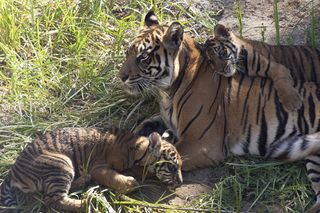
The San Diego Zoo Safari Park's two Sumatran tiger cubs took a catnap after a morning spent exploring their exhibit. Conrad claimed the top spot, while brother Thomas chose to be near, rather than on their mother, Delta.
The 3-month-old male cubs made their public debut on Tuesday and will be on exhibit on Wednesdays, Saturdays and Sundays, from 9 a.m. to noon. The Safari Park is fund-raising to build a new, forested tiger haven that will offer up-close views of these fascinating felines and highlight conservation efforts for the species.
[Full Story: Momma's Boys Make Debut at San Diego Zoo Safari Park]
A glimpse of glory
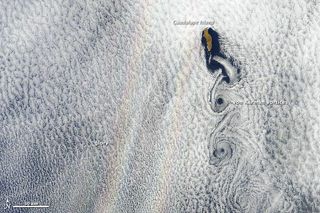
Glory be.
NASA's Aqua satellite caught an arresting image of a rainbow-like optical phenomenon called a glory over the Pacific Ocean on June 20.
Glories can be seen on Earth with the naked eye when looking down upon fog or water vapor, as when climbing a mountain or looking down upon clouds from an airplane.
The phenomenon is caused by light scattered backward toward the viewer by individual water droplets, producing an oscillating pattern of colors ranging from blue to green to red to purple and back to blue again.
[Full Story: Glory! Double Rainbow Seen from Space]
'Strike' of luck

Ben Leshchinsky just so happened to be home from his job as a postdoctoral researcher when he decided to try and snap a photo of the lightning from the brief but intense thunderstorm that hit Manhattan this afternoon (June 22).
He lucked out. Camped out on his terrace at his apartment near 67th Street and Amsterdam Avenue, looking northeast toward Central Park, he caught this image of a lightning bolt in action.
[Full Story: Stunning Photo: Lightning Strikes in Manhattan]
Leggy arrival at the Belfast Zoo
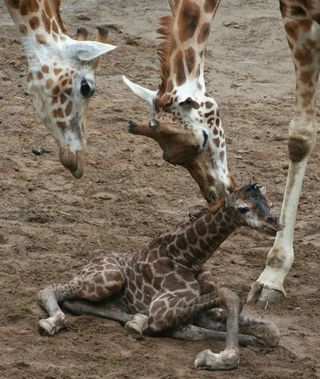
On June 13, Belfast Zoological Gardens celebrated the tallest birth of 2012 with the arrival of a female giraffe calf.
The latest addition was born to mother, Niamh and father, Finn. Finn arrived from Fota Wildlife Park in February 2011 and this is his first calf.
[Full Story: One Tall Baby Arrives at Belfast Zoo ]
First 2012 Hurricane
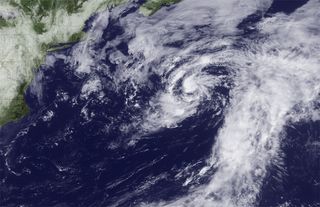
Tropical Storm Chris strengthened to become a hurricane this morning (June 21), the first of the 2012 Atlantic hurricane season.
Chris became a tropical storm on June 19, forming far out to sea and parallel with New England.
[Full Story: Chris Becomes First Hurricane of 2012 Season]
I spy with my little eye ...
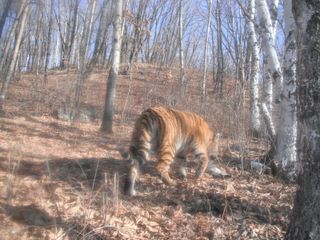
Photos of the endangered Amur, or Siberian tiger, have been taken for the first time by a camera trap in a nature reserve in northeast China, suggesting that the cats are expanding their range south from Russia where they are more plentiful.
The two photos were taken in April in the Wangqing Nature Reserve in northeast China's Changbai Mountains. The tiger likely came from Hunchun, close to the Russian border, where multiple images of Siberian tigers were taken in March. Several Amur leopards, which are even more endangered, were also spotted at that time in the Hunchun reserve.
[Full Story: Cameras Spy Endangered Siberian Tiger in China]
A different view

A newly released image from NASA shows off our home planet from an unfamiliar angle our iconic blue marble, snapped by a satellite that circles the Arctic, is arrayed in frosty white.
The newly launched Suomi National Polar-orbiting Partnership (S-NPP) satellite, which was blasted into space on Oct. 28, 2011, circled the Earth 15 times to capture the visual data used for the stunning picture.
[Full Story: Photo: 'White Marble' Shows Arctic View of Earth]
Sign up for the Live Science daily newsletter now
Get the world’s most fascinating discoveries delivered straight to your inbox.
A rare find
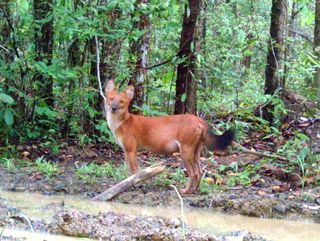
The elusive and endangered dhole, or Asiatic wild dog, has been found roaming the forests of four nature reserves in Thailand. Working with photographs snapped by camera traps set up in 15 Thai parks, researchers have created the first map showing where dholes in this region likely live and what areas are suitable habitats for them.
The wild dogs favor areas deep within parks, far from humans. Enhanced protective programs near forest edges could help preserve dholes, which are more likely to be shot or poisoned when they come too close to civilization.
[Full Story: Elusive Wild Dog Species Spotted in Thailand]
Holey clouds
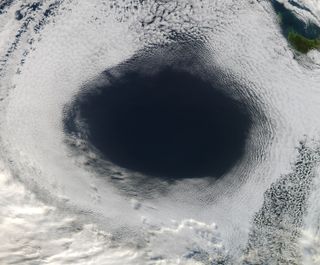
NASA's Aqua satellite caught an arresting image of a strange, enormous weather system off the coast of Tasmania June 5, featuring a cloud hole wider than 620 miles (1,000 kilometers) at one point.
Analysis by NASA scientists found that the hole was caused by sinking air associated with a high pressure system off the surface of the Great Australian Bight, a huge bay to the continent's south. The oval-shaped hole was cut out from a blanket of marine stratocumulus clouds.
[Full Story: Huge Cloud Hole Photographed by Satellite]
Not just another Sunday
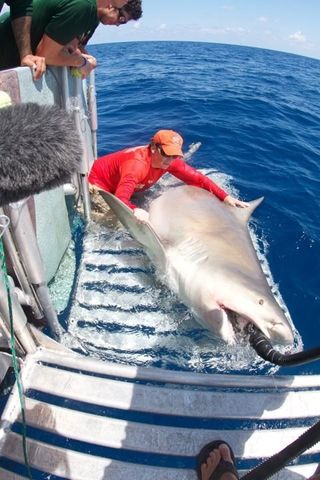
For scientist Neil Hammerschlag, it was just another Sunday. He was out cruising the reefs near the Florida Keys, hunting for sharks not as trophies, but for research aimed at keeping them out of display cases and in the water. In many places, these iconic predators are disappearing.
On Sunday, May 27, they were having plenty of luck. Something snagged the other end of the 75-foot (23-meter) line, and Hammerschlag began to pull it in. Right away, he said, he could tell something was different.
[Full Story: Photo: Giant Bull Shark Surprises Researchers]
Surprising sight
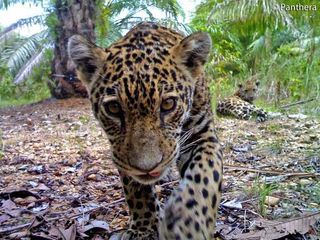
For the first time, cameras have documented wild jaguars with cubs in an oil palm plantation in Colombia, a conservation organization announced today (June 6). This is significant for conservationists who hope to protect the wild cats' populations because it indicates jaguars are willing to enter the plantations, which can break up their natural habitat.
The wild cat conservation organization Panthera set up hidden cameras, called camera traps, in an oil palm plantation in Colombia's Magdalena River valley. They ended up capturing photos of two male jaguars and a female jaguar with cubs, as well as a video of a male jaguar.
[Full Story: Rare Photos Reveal Elusive Jaguar Cubs on Oil Plantation]

